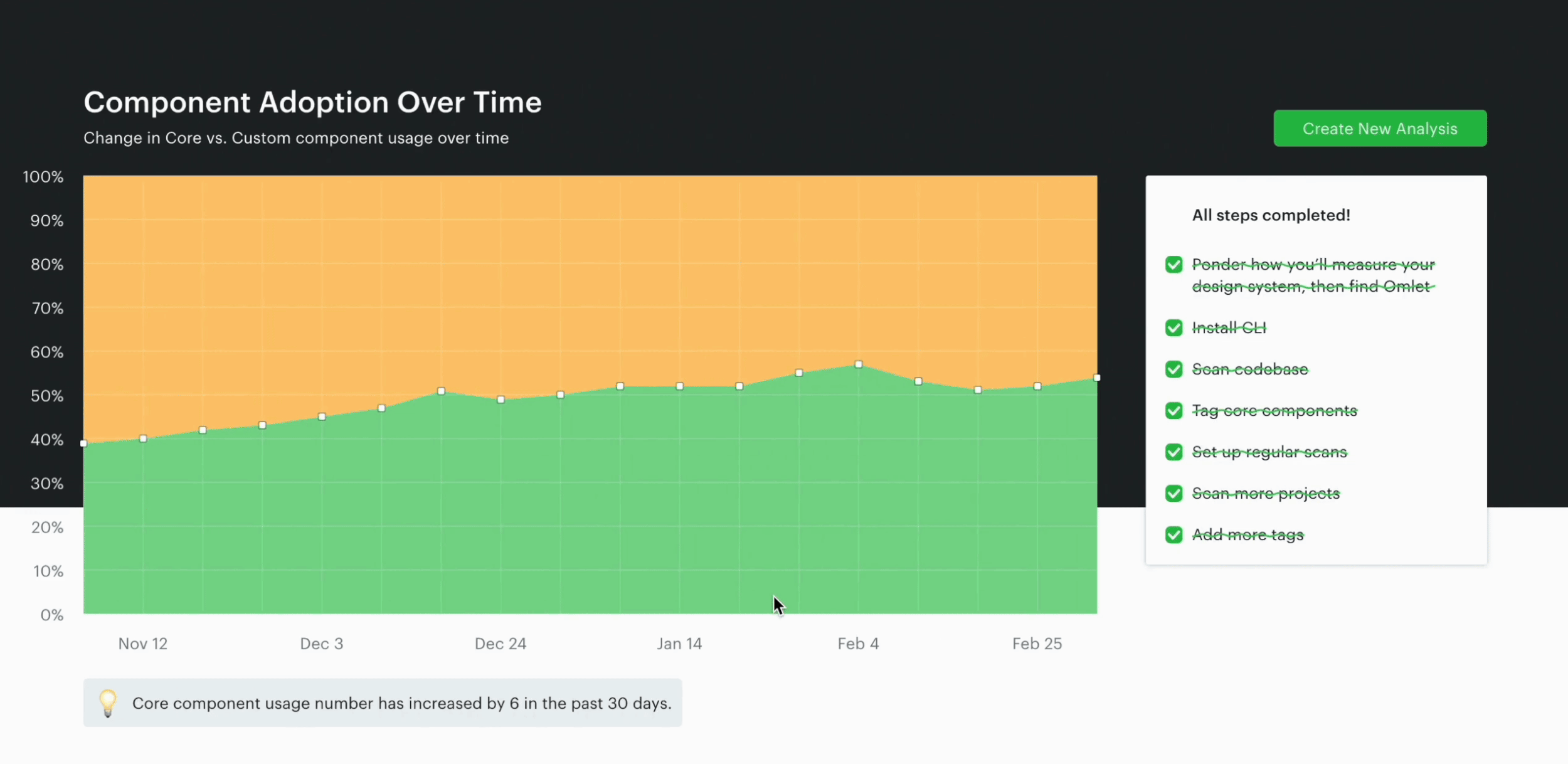Calculating Design System Adoption
On many engagements, it is surprisingly hard to actually know who (if anyone) is using the design system your team has been hard at work on.
Defining a strategy for tracking and reporting accurate information on which teams are using which components should be a key focus for all design system engagements and should be defined early. Having accurate adoption information is crucial to providing all other quantitative metrics. By creating a strategy and a technical approach to monitor this essential data prior to implementation, you can effectively track trends over time. This early setup allows you to begin discussing the influence of the design system sooner rather than later.
Tracking Component Usage
Omlet.dev UI
Code analytics tools
Whenever possible, tracking component usage directly in the codebase will be the most accurate way to measure adoption across all projects within the organization. New tools like Omlet can automate this process and provide web UIs to visualize the data and trends over time.
Figma analytics
Teams using Figma can leverage their Library Analytics to see a variety of different insights into how design teams are using the Design System. Available information includes component and variant usage stats and detachment rates. This info lets you see not what teams are using components as well as highlights when components are not meeting product needs.
Site analysis
A visual review of products in development can be useful to identify what design patterns are in use. The simplest method involves taking a screenshots of product screens and highlighting in green which elements align with the design system and highlighting with red those that don't. Note: This type of review does not necessarily reveal which teams are following the design guidelines but not leveraging design system code components.
Team surveys
Useful for collecting info on satisfaction as well as future direction, surveys can also be used to track adoption. While you are requesting product team feedback on a regular (e.g. quarterly) basis, adding questions about what components teams are using or are planning to use can be valuable even if you are also tracking adoption via one of the other methods above. (As they rely on response rate and on self reported usage data, it is preferable that surveys are not the lone adoption metric if at all possible.)
Reporting on Adoption
While these adoption metrics and trends are critical for design system teams to be aware of, it is recommended that they are contextualized when reported out to executive stakeholders. Is 15% adoption good? What about 40%?
Adoption numbers can be reported as trends ("adoption is up 20% since this time last year") and as foundational pieces of information to track when reporting other design system metrics such as cost savings, time savings, and overall ROI. Using adoption as part of standard business metrics will result in broader understanding of the impact the design system is having on the organization.


